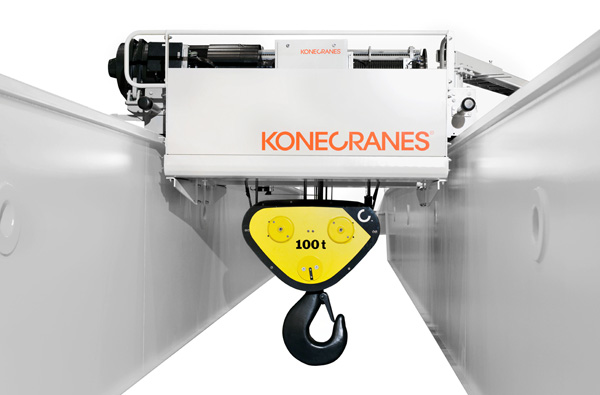 The SMARTON has a "human-interface-to-machine" system that continuously updates the user on the weight of the load and its position relative to the available workspace. |
Konecranes has introduced the SMARTON crane, which is made of 98% recyclable material.
Designed to be environmentally friendly, Konecranes claims the crane's braking energy, when fed back into the power grid, reduces energy consumption and cuts energy costs by up to one third.
Its compact size also enables new industrial spaces to be smaller, subsequently reducing construction costs and heating expenses.
The SMARTON has a "human-interface-to-machine" system that continuously updates the user on the weight of the load and its position relative to the available workspace. The crane also monitors its own condition and recommends when and what kinds of inspection or preventive maintenance should be performed. The user can therefore plan and minimise maintenance shutdowns, and maximise uptime, reducing costs.
According to Konecranes, the crane has an evolutionary design that is based on technological improvements in modular components and features. The crane can easily be updated with smart solutions like automated positioning, extended speed range, defined working areas, maintenance, monitoring or remote diagnostics, to meet changes in the user's needs.
Depending on the set up, the SMARTON crane can lift loads ranging from 30 tons to over 500 tons. It is used in industrial sectors like steel handling and warehousing, automotive, general manufacturing, power, workshops, automatic storage systems and mining.
Konecranes provides lifting solutions to the manufacturing and process industries, shipyards, ports and terminals. In 2007, the group's sales totaled EUR2.103 billion (USD2.939 billion). It has 9,700 employees in 43 countries.